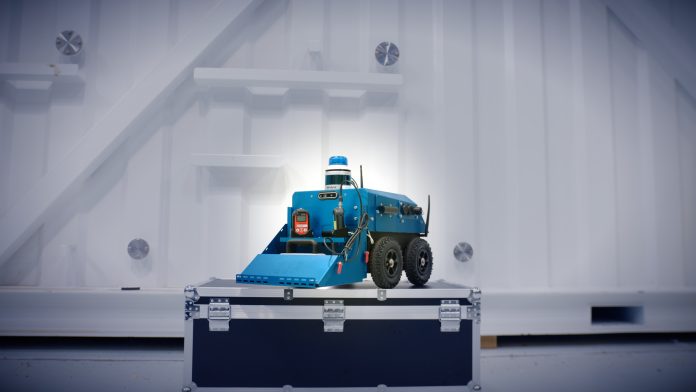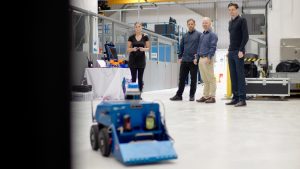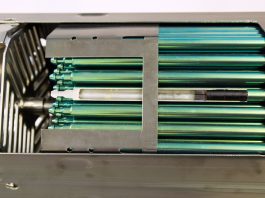A cutting-edge robotic system designed to identify radioactive contamination in large-scale nuclear decommissioning sites has successfully completed multiple real-world deployments.
The autonomous platform, known as CARMA II, represents a major advancement in nuclear safety and efficiency.
The innovative technology has demonstrated its impressive capabilities in trials at the Sellafield nuclear site in Cumbria, marking a significant step forward in protecting human workers from hazardous radioactive contamination exposure.
The evolution of CARMA II
Developed through a partnership between the University of Manchester, the Robotics and AI Collaboration (RAICo), and Ice Nine Robotics, CARMA II integrates sophisticated technology to enhance radiation monitoring.
This robotic system autonomously navigates nuclear environments, mapping radiation levels and providing crucial data to health physics teams.
Designed to complement existing safety protocols, CARMA II supports Sellafield’s personnel by improving monitoring precision and efficiency.
The robotic system’s development aligns with the broader objective of minimising human exposure to radioactive contamination while reducing costs associated with nuclear site decommissioning.
Enhancing nuclear safety
CARMA II is equipped with an array of high-tech sensors, including an onboard laser scanner, dual 3D depth cameras, and detectors for alpha, beta, and gamma radiation.
This advanced sensor suite enables the robot to generate detailed radiation ‘heat maps’ that offer real-time insights into radioactive contamination levels.
Historically, radiation surveys have been conducted manually, requiring personnel to use handheld scanners – a method that is both labour-intensive and potentially hazardous.
By contrast, CARMA II automates this process, providing more frequent, detailed, and standardised radiation monitoring.
Real-world deployments validate CARMA II’s capabilities
CARMA II has undergone rigorous testing in active nuclear environments, including two separate deployment locations at the Sellafield site.
By comparing data from known low-radioactivity and high-radioactivity areas, the system demonstrated its effectiveness in accurately detecting and mapping radioactive contamination.
These successful trials have positioned CARMA II as a viable long-term solution for nuclear decommissioning efforts.
The ability to perform repeatable, high-resolution radiation surveys ensures that health physics professionals can make well-informed decisions while prioritising safety.
A vision for the future: AI and robotics in nuclear decommissioning
RAICo, a partnership involving the UK Atomic Energy Authority, the Nuclear Decommissioning Authority, Sellafield, and the University of Manchester, is driving the integration of robotics and AI in nuclear decommissioning.
The adoption of CARMA II underscores the industry’s commitment to leveraging innovative technologies for safer and more efficient operations.
Dr Kirsty Hewitson, Director of RAICo, emphasised that CARMA II exemplifies the power of collaboration between industry and research institutions.
Hewitson said: “CARMA II’s abilities to bring efficiency to nuclear decommissioning and remove humans from harmful radioactive environments underscore much of what we seek to achieve at RAICo. I look forward to seeing this technology used across the wider nuclear estate.”
Following the successful trials at Sellafield, Ice Nine Robotics is refining CARMA II to prepare for broader commercial deployment.
Matthew Nancekievill, CEO of Ice Nine Robotics, explained: “CARMA II solves a real and present problem in the nuclear decommissioning sector.
“We are now in the process of making a number of tweaks following the successful deployments as we prepare the platform for commercial readiness and potential roll-out to Sellafield and the wider NDA estate.”
As the nuclear industry continues to evolve, innovative solutions like CARMA II will play a critical role in mitigating radioactive contamination risks.
The successful deployment of this autonomous system marks a transformative moment in nuclear decommissioning, setting a precedent for future robotic advancements in hazardous environments.










